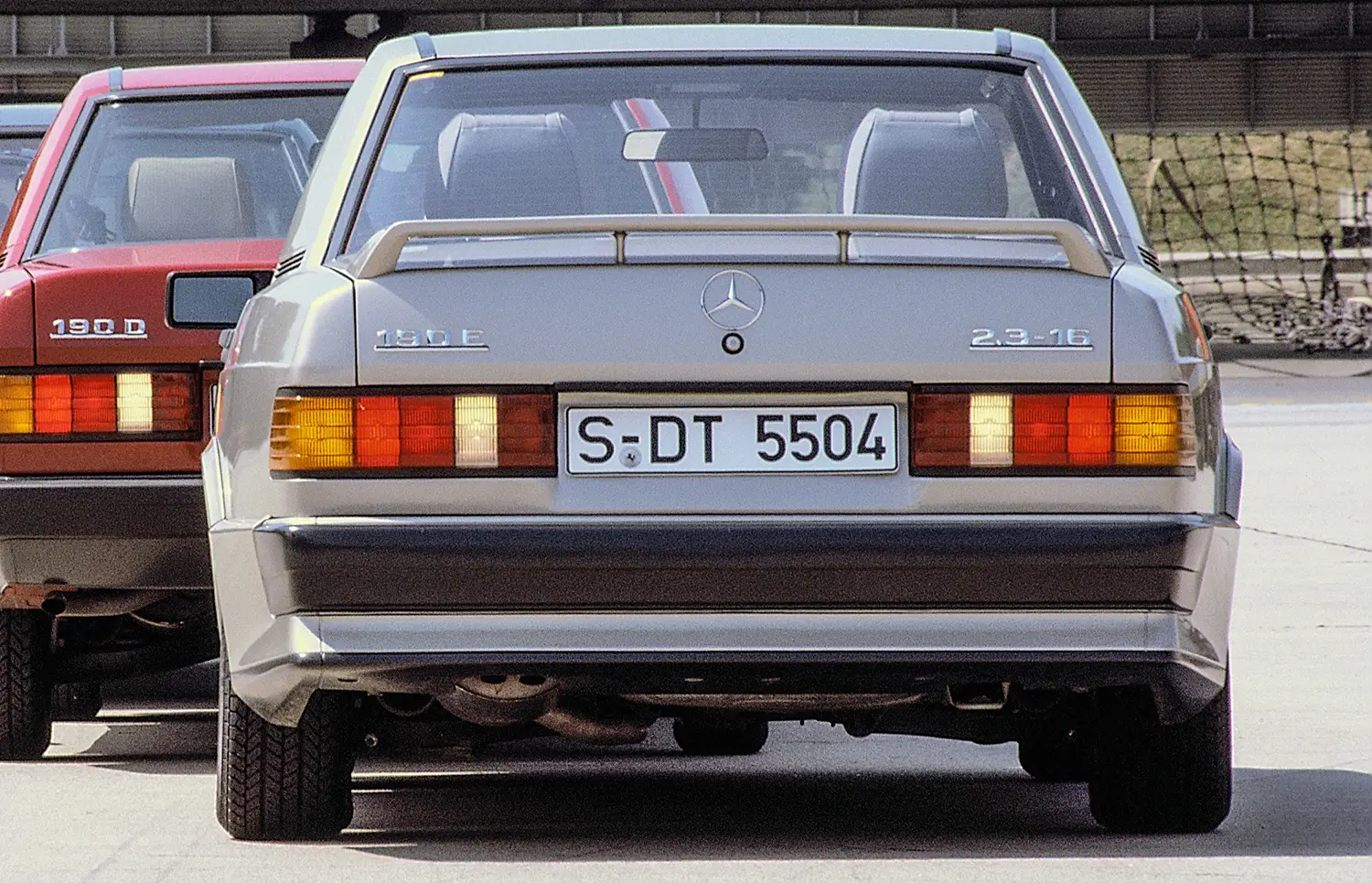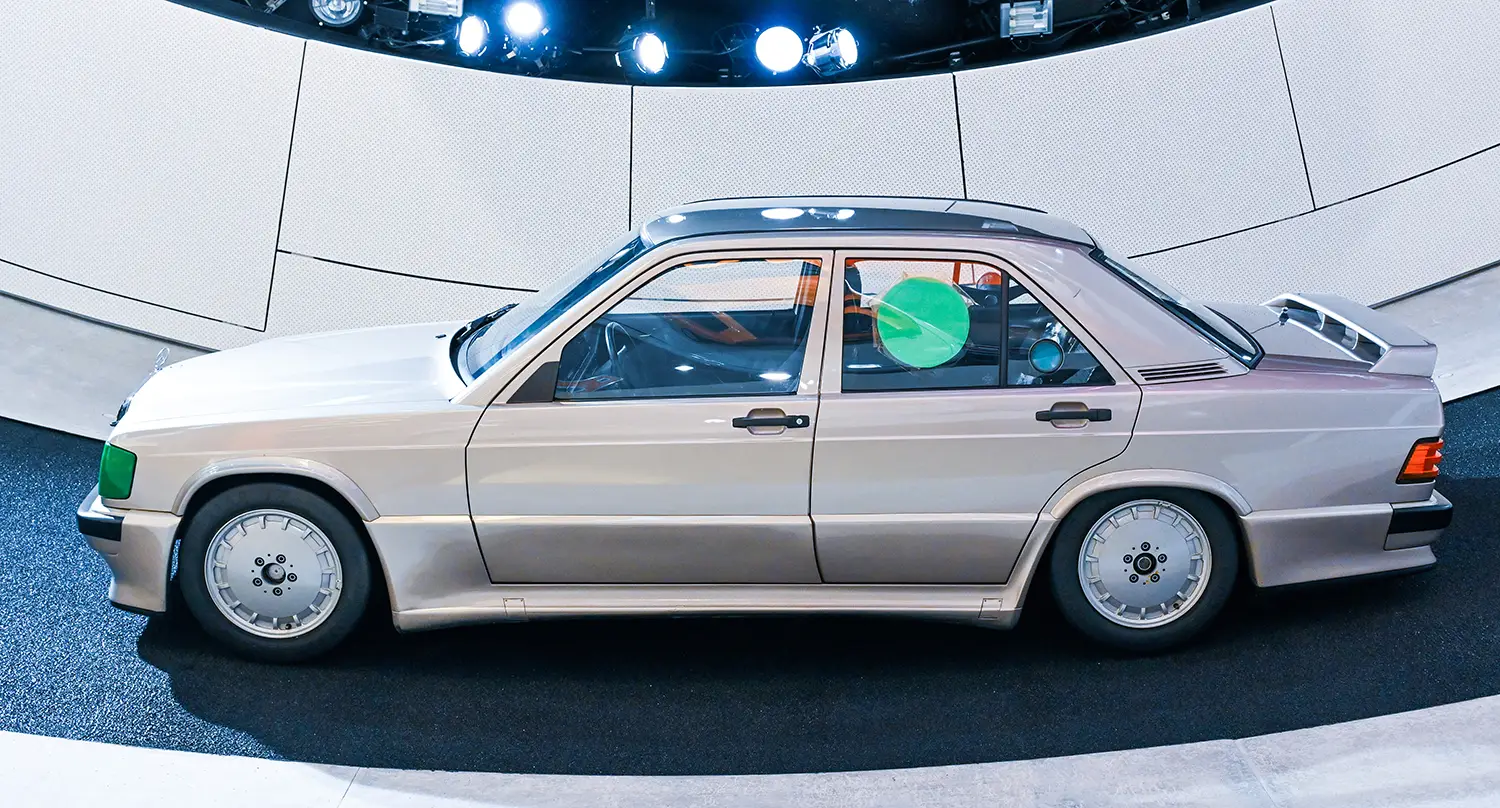
The 1983 Mercedes-Benz 190 E 2.3-16 marked a turning point for the brand. This compact sedan proved that precision engineering and motorsport DNA could coexist with executive comfort. It wasn’t just another 190 E, it was a statement of performance and endurance that reshaped Mercedes-Benz’s image.
Origins of the 190 E 2.3-16
Mercedes-Benz introduced the W201 series, known as the 190 E, in the early 1980s as its first compact executive car. While the standard versions focused on refinement, engineers wanted to create a model capable of challenging BMW’s growing dominance in sport sedans. The answer came in 1983 with the 190 E 2.3-16, powered by a highly tuned four-cylinder engine co-developed with Cosworth.

Engineering Partnership and Development
To meet homologation rules for racing, Mercedes needed a production version that reflected its motorsport ambitions. Cosworth’s expertise transformed the existing 2.3-litre engine with a 16-valve aluminium cylinder head, twin camshafts and advanced fuel injection. The result was a strong yet smooth power unit capable of sustained high-speed performance.
Design and Structure Innovations
Although visually similar to the standard 190 E, the 2.3-16 received extensive mechanical upgrades. It featured a five-speed manual gearbox with a distinctive dog-leg first gear, a limited-slip differential and firmer suspension tuning. Aerodynamic body enhancements, including a subtle front spoiler and raised rear wing, improved stability at speed. Inside, the cabin gained sports seats, a leather-wrapped steering wheel and additional gauges that underscored its performance focus.

Heritage Spotlights and Record Achievements
Before reaching showrooms, Mercedes put the car through an extreme endurance test at Italy’s Nardò test track in 1983. Three near-production 190 E 2.3-16s covered 50,000 kilometres in just over 201 hours, averaging almost 250 km/h without major mechanical failures. This feat immediately established the model’s reputation for reliability and engineering precision. The car’s racing debut followed in 1984 at the Nürburgring, where young Ayrton Senna famously outdrove seasoned champions in identical 190 E 2.3-16s, a moment that sealed its motorsport credibility.
Power, Engine Specs & Performance
The 2.3-litre inline-four produced around 185 hp and 235 Nm of torque in European specification. Paired with its aerodynamic body and close-ratio gearbox, the 190 E 2.3-16 reached 100 km/h in roughly 7.5 seconds and achieved a top speed near 230 km/h. Its combination of power, balance and durability made it a strong rival to performance sedans from BMW and Audi at the time.

Legacy and Influence
The 1983 Mercedes-Benz 190 E 2.3-16 marked Mercedes’ entry into the modern performance era. It showed that the brand could produce a car equally at home on the autobahn and the racetrack. The innovations developed for this model paved the way for later AMG-tuned variants and, eventually, the compact performance lineage seen in today’s C-Class.

In summary, the 190 E 2.3-16 combined durability, precision and understated style in a package that defined an era. It remains one of the most respected examples of how Mercedes-Benz fused motorsport technology with everyday usability, creating a true icon of automotive heritage.
Disclaimer: Content on this site is for informational purposes only. Vehicle specs, pricing, and availability may change. Always verify details with official sources before making decisions. Opinions are those of the authors.
Source: Mercedes-Benz


